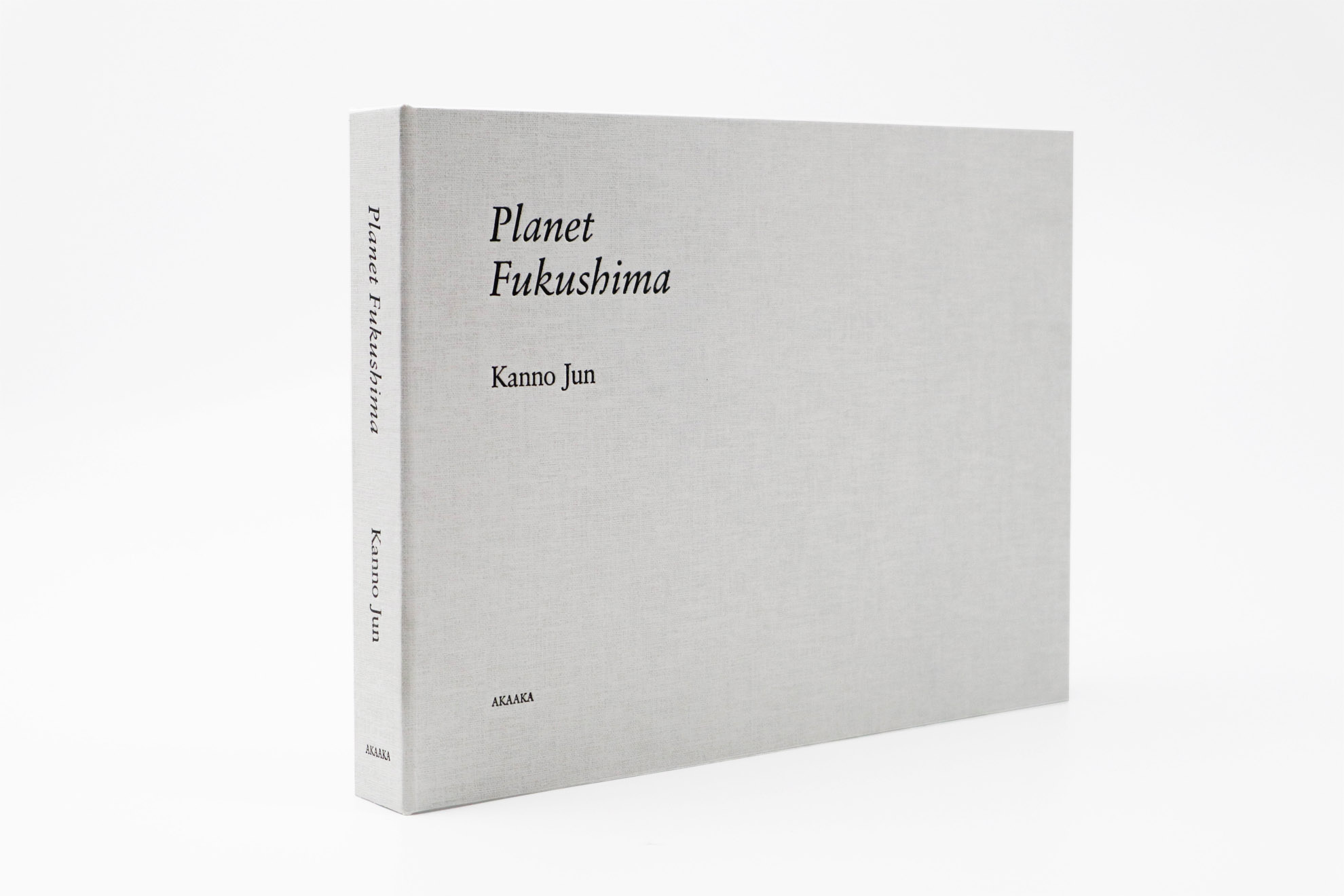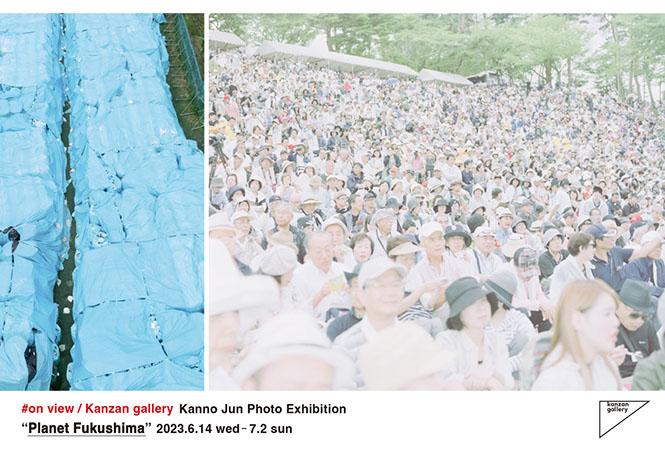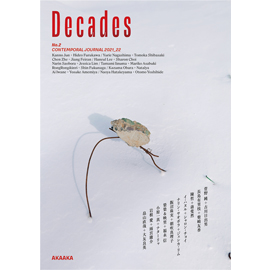
菅野純『Planet Fukushima』
発行:赤々舎 Size: H182mm × W257mm Page:304 pages (152pages + 152pages) Binding:左右両側スイス装、コデックス製 Published in March 2023 ISBN:978-4-86541-162-1 |
¥ 7,000+tax
国内送料無料! お支払い方法は、銀行振込、郵便振替、 クレジットカード支払い、PayPal、PayPay よりお選び頂けます。 |
|---|
About Book
バラバラに時を刻むあらたな時空間とレイヤー
「Fat Fish」と「Little Fish」━ Planet Fukushimaから
Planet Fukushima
Kanno Jun
"I think it was around December 29 or 30, during the last week of 2015, when I was driving from Soma to Date, the city where my parents live. Route 115 was usually thronged with vehicles due to the ongoing decontamination work, but during the New Year holidays there was hardly any traffic on the road, and it had gone back to what it used to be, a mountain pass meandering quietly through the peaks.
Driving in an unfamiliar environment was a bit disconcerting, and since it was already late in the afternoon, I decided to take a shortcut along a narrow side road, indicated by the car navigation system, in order to get over the mountains before it got dark. As soon as I got on the road, I saw a large number of flexible container bags ahead of me and reflexively got out of the car to take a photo. However, even with a 24mm wide-angle lens I could not capture the entire scene, so I decided to climb up a nearby mountainside.
The uphill slope was across from a flexible container bag storage area, and when I got to the top, the view below became clear. It was like a vast empire sprawling across a hidden mountainous region. The grid-like streets reminded me of ancient northern cities, the loose grid layout was like a labyrinth extending between houses, and I felt it would not be strange if smoke from evening fires was rising here and there. The peculiar outlines of white fences seemed somehow meaningful, and the flexible container bags dusted with fine grains of snow began looking to me like the scales of fish. I named the place "Fat Fish," and my newfound duties as its sentinel began.
It was in early May 2011 when I returned to my parents' house for the first time after the disaster, and at that time I was still struggling to grasp the seriousness of the situation. I had never thought much about radiation except in the context of war or nuclear weapons, my knowledge of it was vague, and even when I tried to imagine the characteristics of radioactive substances, which are odorless and invisible, it was difficult to come to grips with them.
A few days after I returned to my hometown, the dosimeter that I had long been eagerly waiting for, as production had not kept pace with demand, finally arrived, and I also began feeling the severity of the situation firsthand. My vision began to change in a very strange way, with each scene before my eyes composed of three layers: foreground, middle ground, and background. You might even call them three different dimensions. For example, suppose there was a person in front of me and a mountain in the distance. In the past, both of them would have existed in the same space at the same time. However, the nuclear accident caused the foreign substance called radioactive contamination (in the middle ground) to come between the person in the foreground and the mountain in the background, and the two were separated off into completely different dimensions. Somewhere along the way, a new layer (close-range view) was added between the person (foreground) and the camera lens, and I became aware of the space before me in layers, like those in Photoshop. If the dosimeter reading was unexpectedly high, the space behind the lens, that is, the space I (and the camera) occupied, formed one additional layer (perhaps as a barrier), and before I knew it, another space behind me, separate from the one occupied by me and the camera, was pressing against my back. I felt a sense of discomfort as if I had been gotten sucked into one of many layers in a Photoshop image on a computer monitor.
From the many people I have met over the past 10 years, I have learned that each person has a different sense of time. For some it goes fast, for some slow, for some it is fragmented, and for some things have already gone back to how they were before the disaster. People's sense of time can differ depending on the type and scale of the disaster they experienced, as in the difference between coastal areas where tsunami damage is visible and inland areas where radiation damage is severe. There are also major differences between adults and children. Things also depend on the jobs people do. Of course, it is only natural that concepts of time and feelings about the disaster differ from person to person in regions outside of Fukushima. In Fukushima, though the presence of this invisible foreign substance has undoubtedly had some effect (even if only temporarily) on people's sense of time.
The middle ground is at the center, and there are many layers attached to it on either side. And there is a new space, seen from above, that of the "Fat Fish" that I encountered by chance. The layers seem to me to be fragmented and isolated, each ticking away time in its own way, without any rhyme or reason."
Extracted & Reconstructed from the text
"Planet Fukushima" by Kanno Jun
About Binding
2つの「Fish」を分離した上で同じ表紙にくるんだ、左右両側スイス装、コデックス製による製本です。
Related Exhibiton
|
菅野純 写真展「Planet Fukushima」 会期:2023年 6月14日(水)~7月2日(日) 時間:12:00~19:30(日曜日 17:00まで) 会場:kanzan gallery(東京都千代田区東神田1-3-4 KTビル2F) 月曜定休/入場無料 |
 |
Artist Information
菅野純
Kanno Jun
Artist Kanno Jun was born in Fukushima, studied film production in the US, and after returning to Japan worked primarily in the portrait and landscape genres. In 2018 she relocated from Tokyo to Fukushima, and has been producing works dealing with the natural scenery and environment of Fukushima since the 2011 earthquake and tsunami. Some of her works have the theme of relationships between animals and people, and she presents these works under the name "Kanno Panda".
Awards include the 13th New Cosmos of Photography Prize (selected by Araki Nobuyoshi)(1996) and the 42nd Ina Nobuo Award (2017). Major photography exhibitions include Planet Fukushima (Nikon Salon, 2017), Fukushima's New Generation 2001: Seven Rooms (group exhibition, the Fukushima Prefectural Museum of Art, 2001), and Private Room II - Photographs by a New Generation of Women in Japan (group exhibition, Art Tower Mito, 1999). Her many publications include The Circle (self-published, 2017) and Traveling Through South America (Little More, 2004).








